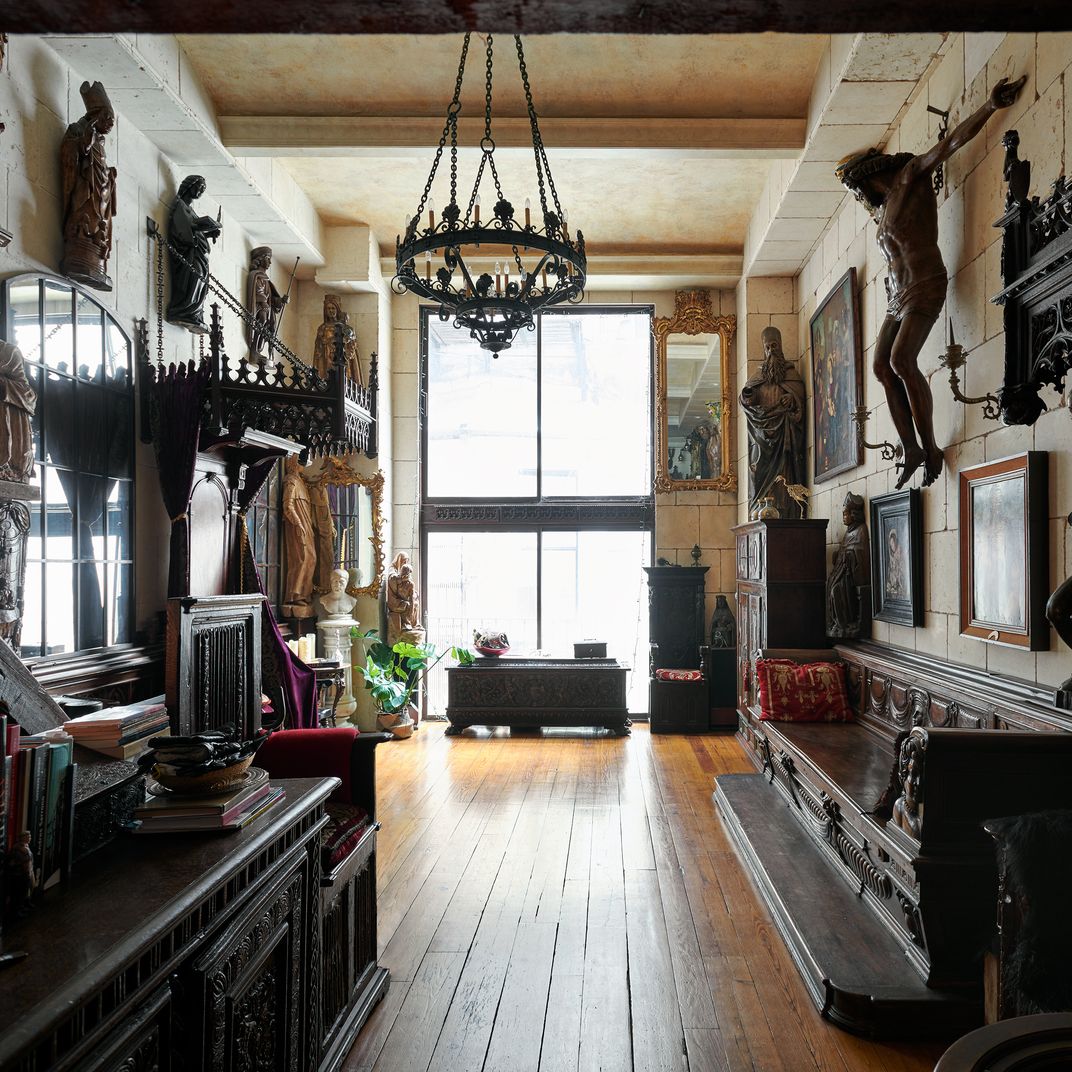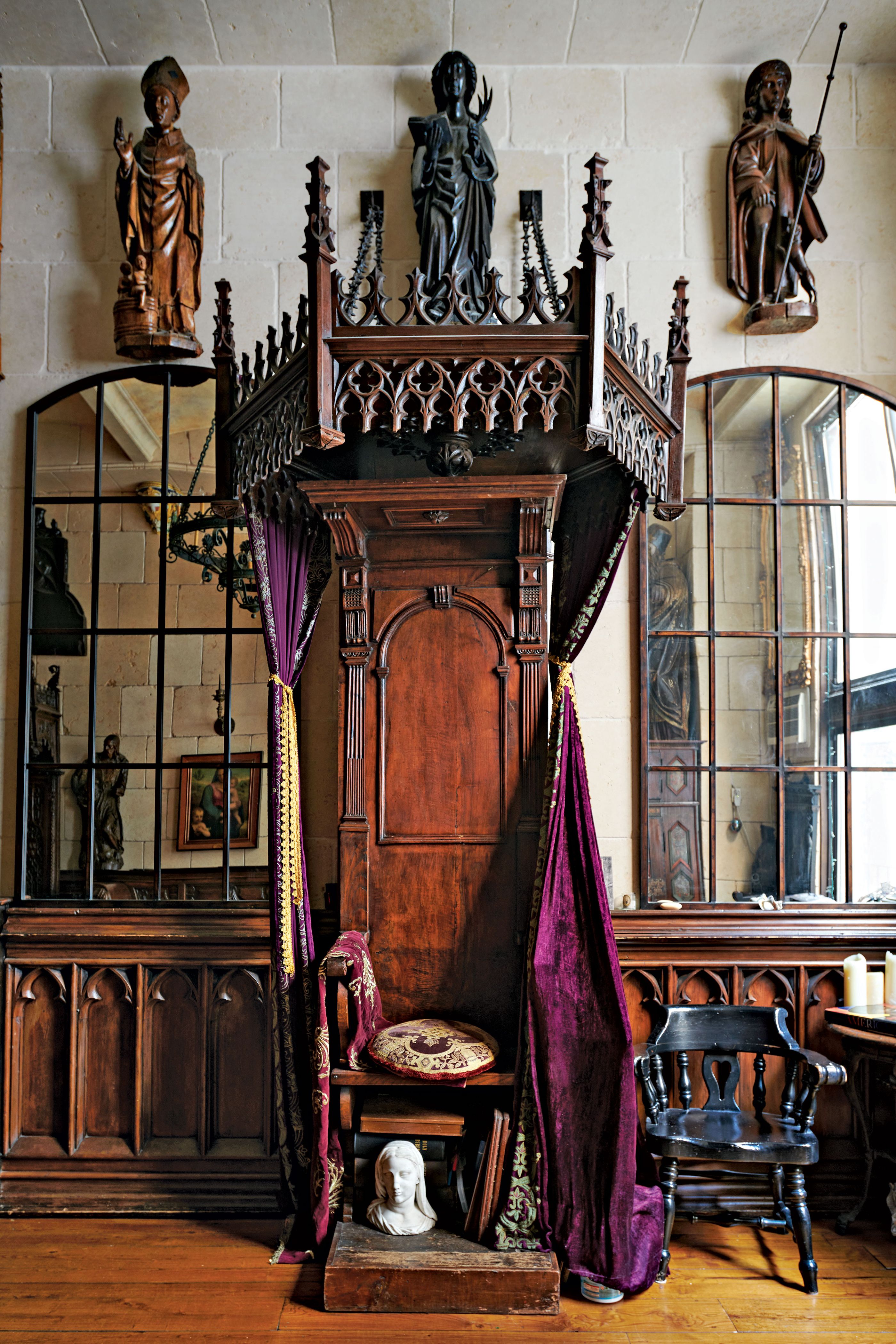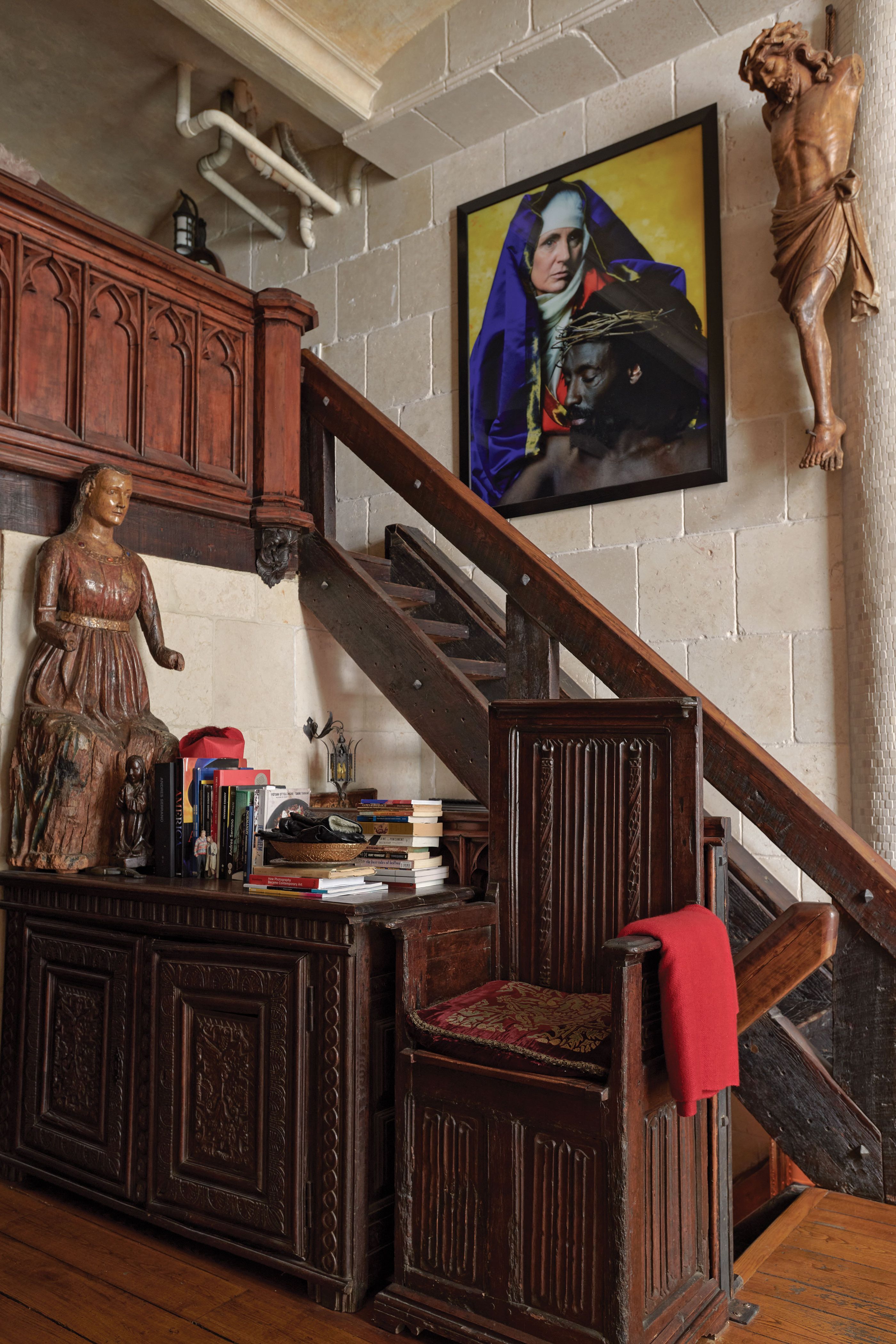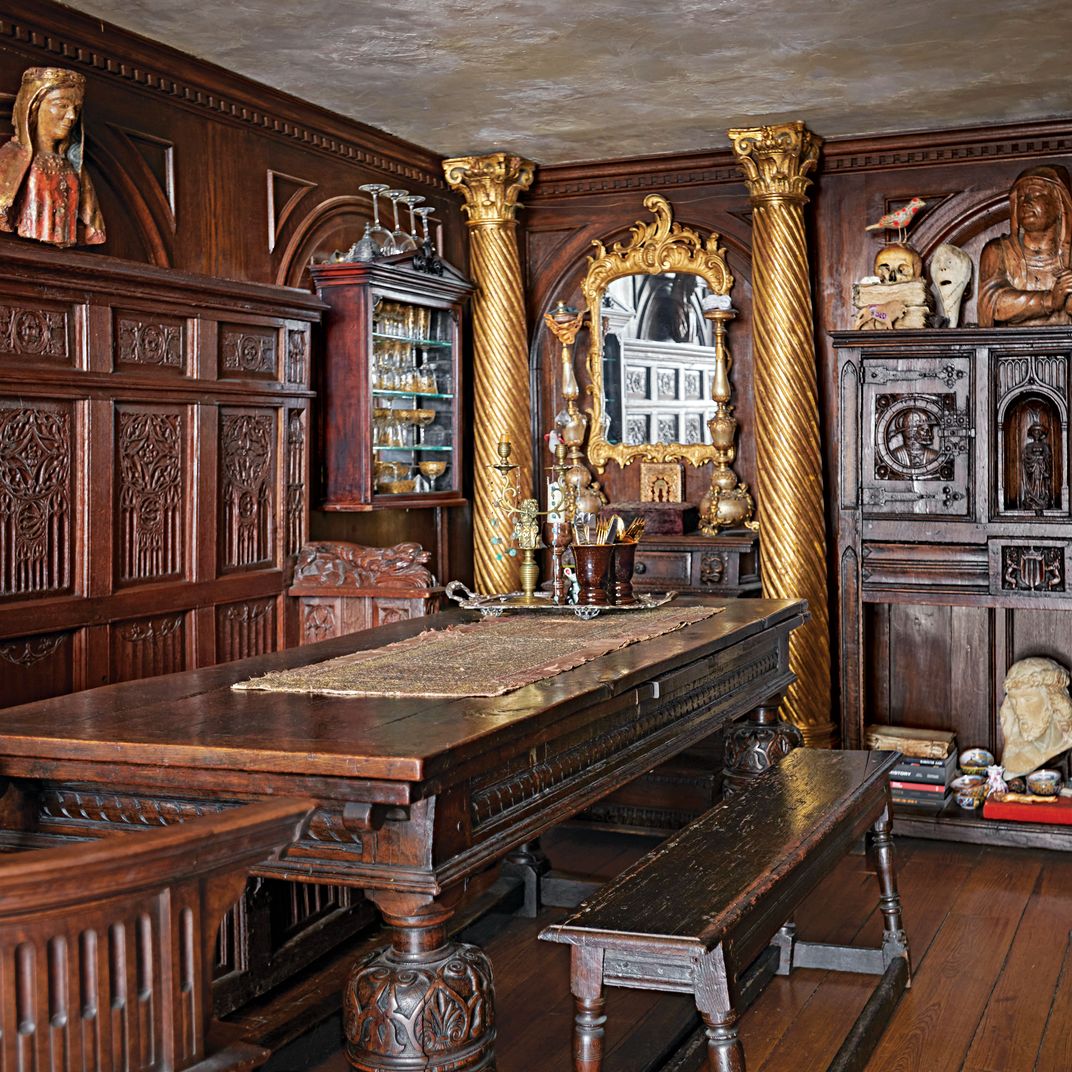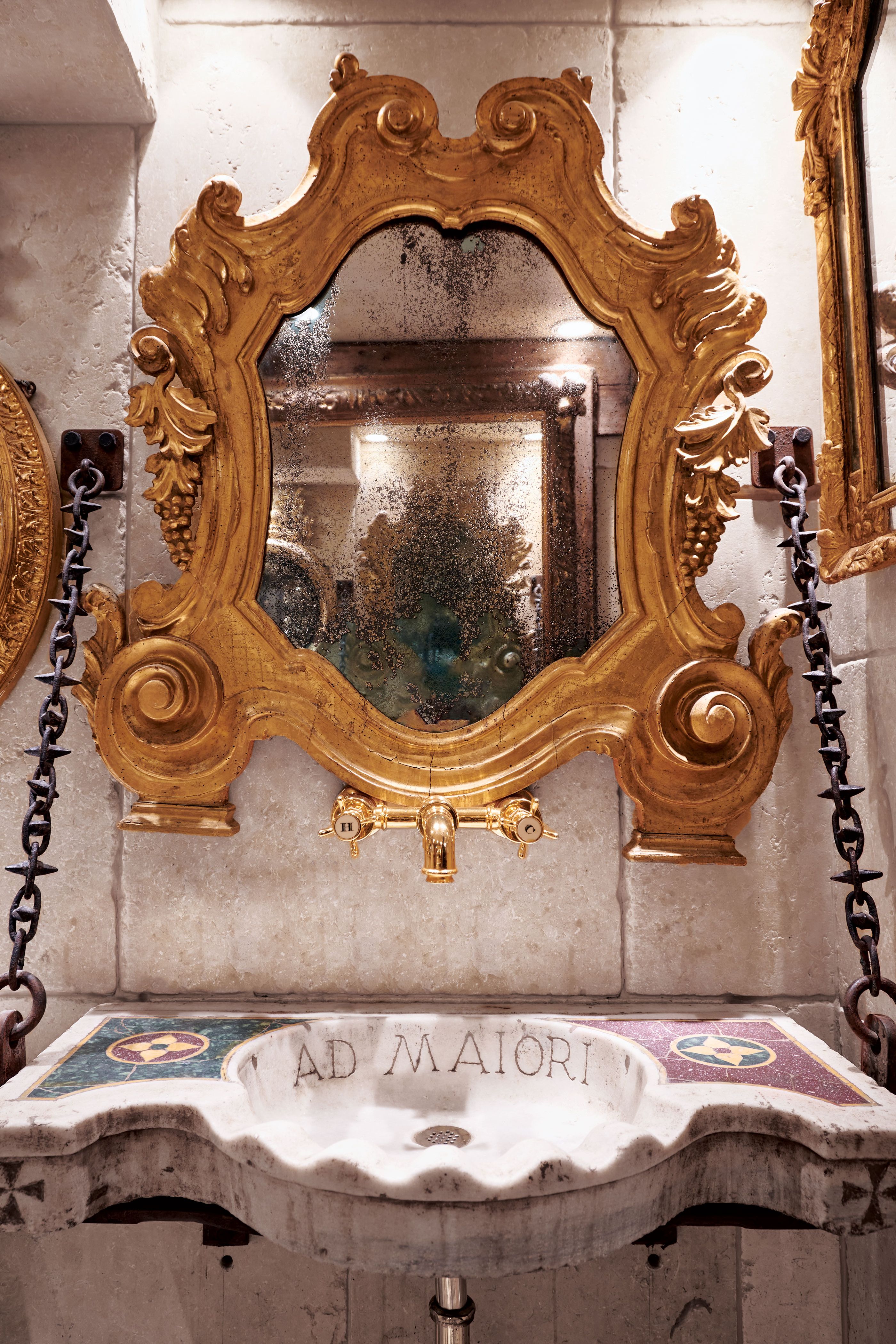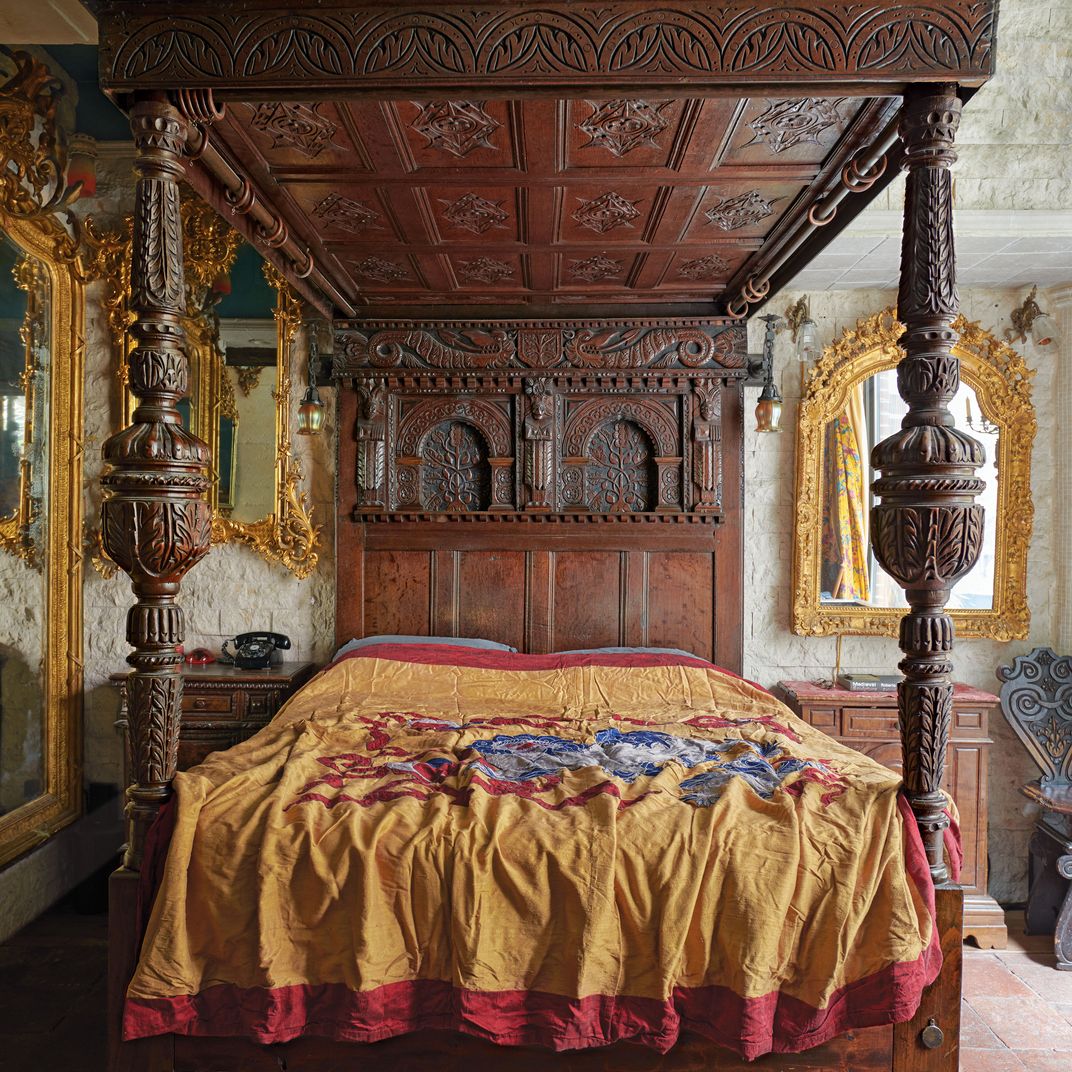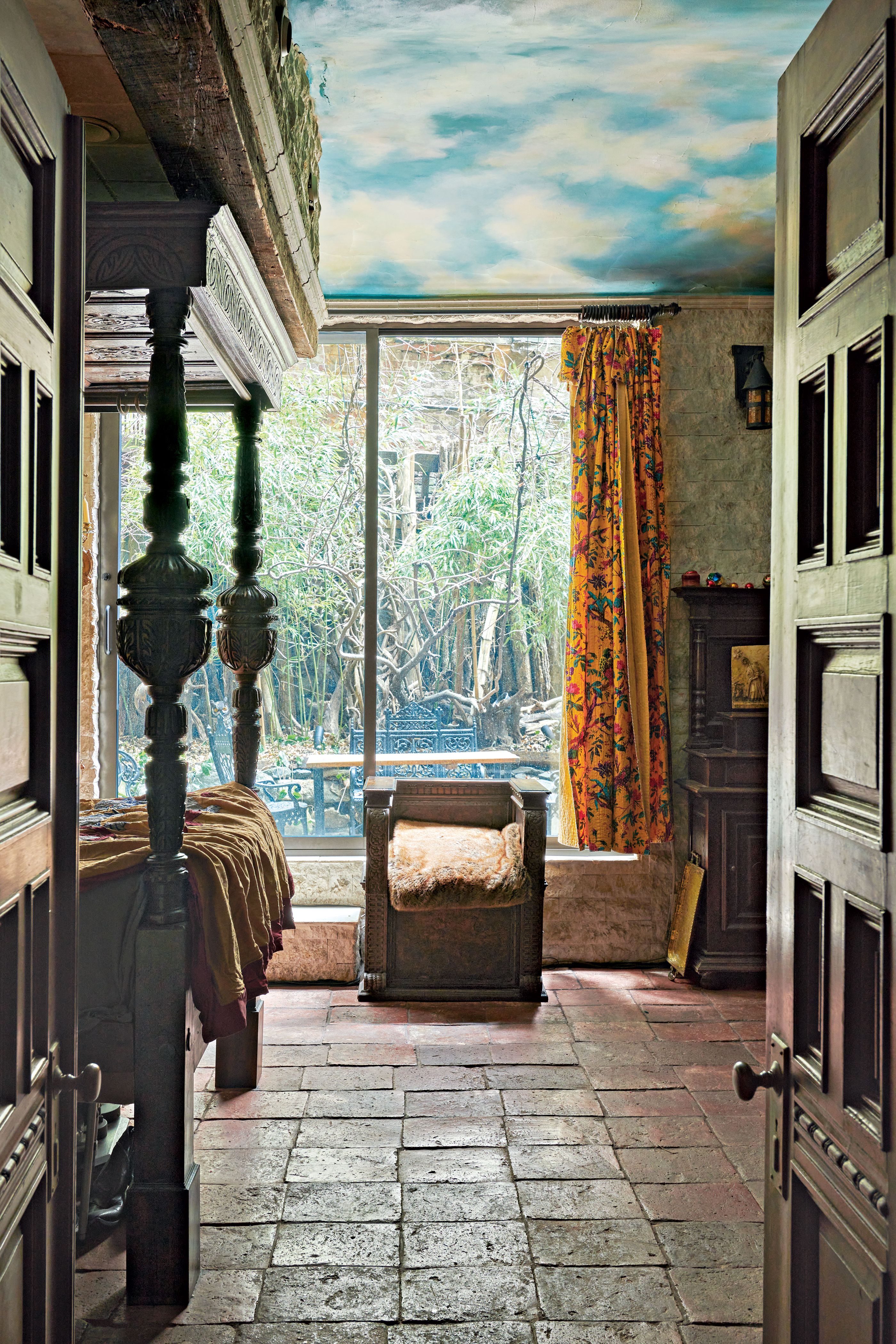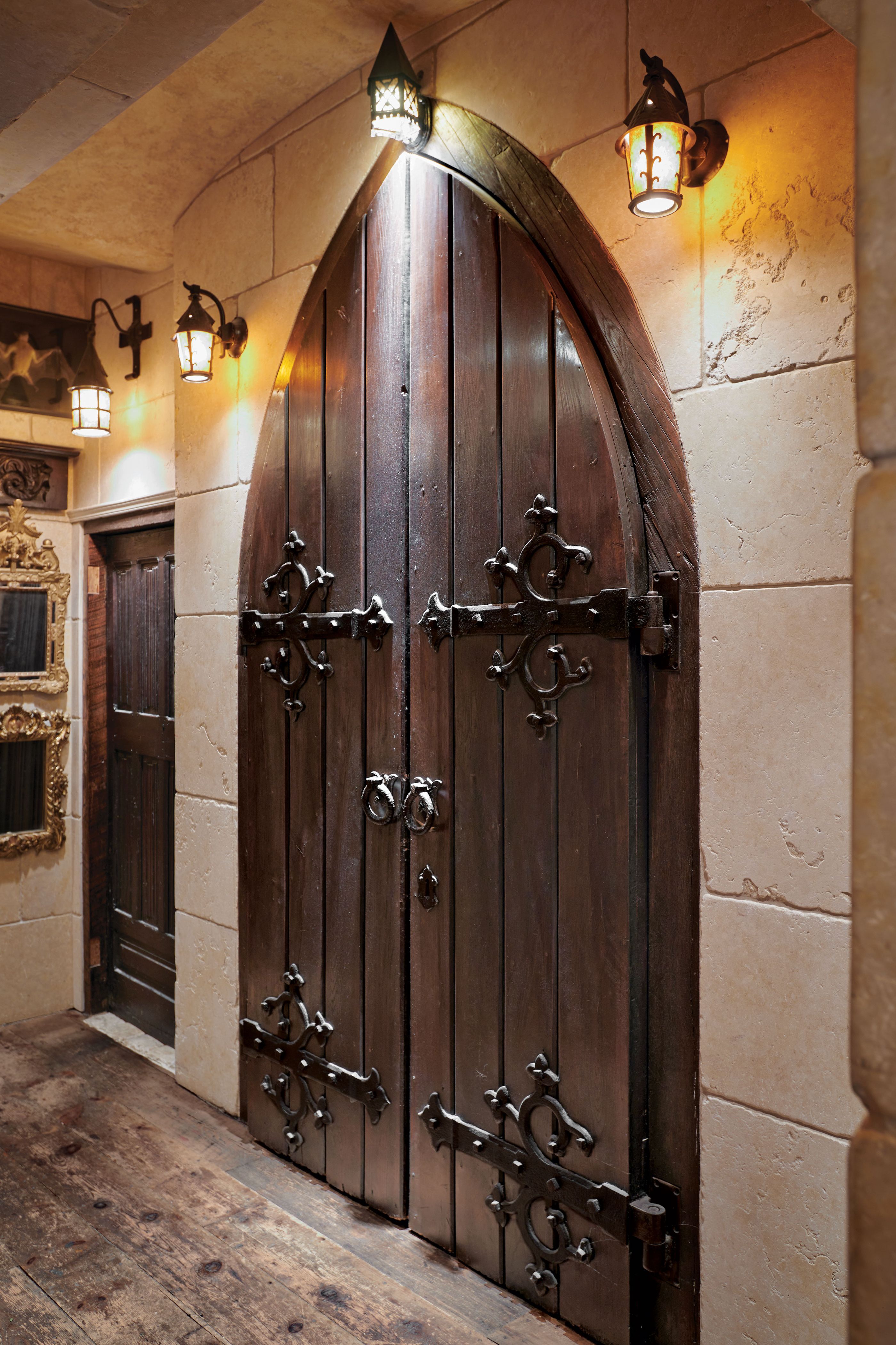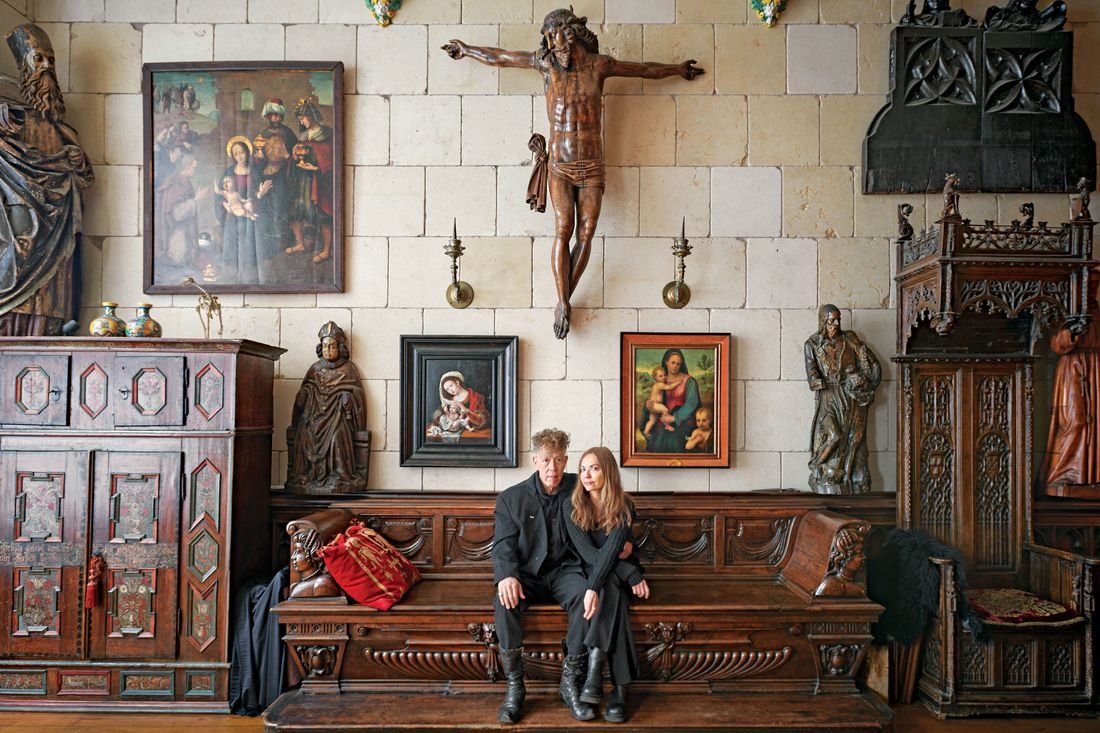
I wanted to create a certain environment that was going to fit my collection of Renaissance and medieval work,” the artist Andres Serrano says, showing me around his triplex in a former industrial building in Greenwich Village which brought to mind churches and monasteries I’ve visited in Europe.
“I realized that the things that made the most sense here were religious in nature. They were Christian paintings, Christian statues, even furniture that looks ecclesiastical, that sometimes. actually came from a church, but it made sense because the Renaissance and the medieval period were all about Christian objects and paintings.”
Serrano was raised Catholic in Williamsburg and became one of the most famous artists in the world during the ’80s “culture wars,” after his 1987 photograph Piss Christ enraged Senator Jesse Helms. He still considers himself a Christian but isn’t a churchgoer. “I go to churches all the time but only in Europe,” he says. “I go to them because they are temples of beauty for me. They are like going to museums; in fact, it’s easier to go to a church, great churches, small churches, any kind of church in Europe than it is for me to go to a museum.”
His apartment, however, is not a museum. “Please,” he says, when I ask if it is all right to sit on the age-polished surface of one of the 17th-century cassapancas — an Italian piece of furniture that evolved from the cassone, which “was used as a chest for traveling from one castle to another”—in his great hall of a living room. The place might have the feel of a castle, but it’s where he lives with his wife, the jewelry designer Irina Movmyga, and works when he is in town. “The main floor is my studio,” he says. “After I’m done shooting, my assistant puts all the equipment and the backdrops in the closet.” More recently, Serrano worked on his first-ever film, Insurrection, a found-footage epic based on the events of January 6 and made in collaboration with the London arts organization a/political and the arts nonprofit CulturalDC, here. Even the cassapancas — he has two — serve a practical purpose. “All the furniture, all the chairs open up so that you can store a lot of things,” he says. “And all my archives and books are stored in all of these trunks and pieces of furniture.”
He moved here from a brownstone in Brooklyn in 1999, also for practical reasons. “I got tired of taking a cab home every night,” he remembers. “I’d leave the house in the afternoon and wouldn’t return home till late at night because I’d go dining and clubbing with friends. After years of doing this, I figured I spent so much time on the Manhattan Bridge I might as well live
in Manhattan.”
But he had a particular vision for how he wanted to live in Manhattan. “I looked at lofts, and I didn’t want a loft, and I looked at apartments, and apartments felt inadequate,” he says. “But when I walked in here, the first thing that I was impressed by was the huge windows and the 17-foot ceilings on the main floor.” It was the only space he put a bid on.
The place looked nothing like it does now, of course. It had a ’70s vibe with dropped ceilings among the dated interventions. “I knew right away that I wanted to give the home a feeling of age,” he says. He clad the living-room walls with Jerusalem limestone and salvaged wood paneling from churches and hotels that were being renovated or torn down. Some of the furniture comes from auction houses.
Serrano’s photograph The Other Christ, from 2001, is the only piece of his in the apartment, which brings me to ask about Piss Christ, which depicts an image of a plastic crucifix submerged in the artist’s own urine. It was the antithesis of the usually romanticized image of Christ dying on the cross. Serrano explains, “I feel that if someone looking at Piss Christ is affected by it in a negative way, or upset by it, they should think about what the photograph symbolizes and that the crucifixion is a really ugly way to die. And all your fluids come out, your piss, your blood, and even your excrement.”
This impetus to make sure we confront uncomfortable truths remains central to Serrano’s work. Insurrection is not an easy film to watch, and that’s the idea. “Insurrection is a representation of things as they really happened, but at the same time it’s an artist’s film,” he says. “The film I wanted to make shows you what really happened, and you can pretend it didn’t, but then again we got it on film.”
The Living Room: “When I walked in here,” Serrano says of first seeing his triplex, “the first thing I was impressed by was the huge windows and 17-foot ceilings. Before moving in I started construction on it for six months. I replaced the floors with aged chestnut wood, and then I put up Jerusalem limestone, and some marble tiles on the wall.”
The Living Room: The thronelike 17th-century bishop’s chair has a 19th-century canopy.
The Stairway to the Loft: Serrano’s photograph, The Other Christ, 2001, is the only piece of his art in the apartment.
The Dining Area: The wood paneling came from the Excelsior Hotel off Central Park West. “My first contractor told me that he knew someone who knew the owner of the hotel,” Serrano says. “He said, ‘They are redoing the lobby, and maybe there is stuff you want to see?’ I saw this beautiful paneling they were ripping off the wall.” The English-oak table was found at the store Turbulence. “I like everything about old oak,” he says.
The Powder Room: The reconstituted 19th-century French marble sink is from Country Floors. “The chains were made for me by a blacksmith in Brooklyn,” Serrano says.
The Main Bedroom: Serrano bought the late-16th-century marriage bed from Christie’s in London. When he saw it in the catalogue, “I fell in love with it because Irina and I had just gotten married.” It sold for three times its estimate, but “I felt like this has to be our marriage bed.”
View of the Garden: From the Bedroom Serrano planted wisteria and bamboo outside. The seat of the 17th-century English chair opens for storage. He found the 18th-century Portuguese floor tiles in Paris at the Port de Clignancourt flea market.
A Closet: After finding the 19th-century English church doors, Serrano had door frames built to fit them, which entailed raising part of the ceiling.
The Living Room: “When I walked in here,” Serrano says of first seeing his triplex, “the first thing I was impressed by was the huge windows and 17-foot ceilings. Before moving in I started construction on it for six months. I replaced the floors with aged chestnut wood, and then I put up Jerusalem limestone, and some marble tiles on the wall.”
The Living Room: The thronelike 17th-century bishop’s chair has a 19th-century canopy.
The Stairway to the Loft: Serrano’s photograph, The Other Christ, 2001, is the only piece of his art in the apartment.
The Dining Area: The wood paneling came from the Excelsior Hotel off Central Park West. “My first contractor told me that he knew someone who knew the owner of the hotel,” Serrano says. “He said, ‘They are redoing the lobby, and maybe there is stuff you want to see?’ I saw this beautiful paneling they were ripping off the wall.” The English-oak table was found at the store Turbulence. “I like everything about old oak,” he says.
The Powder Room: The reconstituted 19th-century French marble sink is from Country Floors. “The chains were made for me by a blacksmith in Brooklyn,” Serrano says.
The Main Bedroom: Serrano bought the late-16th-century marriage bed from Christie’s in London. When he saw it in the catalogue, “I fell in love with it because Irina and I had just gotten married.” It sold for three times its estimate, but “I felt like this has to be our marriage bed.”
View of the Garden: From the Bedroom Serrano planted wisteria and bamboo outside. The seat of the 17th-century English chair opens for storage. He found the 18th-century Portuguese floor tiles in Paris at the Port de Clignancourt flea market.
A Closet: After finding the 19th-century English church doors, Serrano had door frames built to fit them, which entailed raising part of the ceiling.
More Great Rooms
- The Selby’s New Book About Creatives With Kids at Home
- ‘If I Had to Leave This Place, I Would Probably Leave New York’
- I’ll Never Forget the Apartment Gaetano Pesce Did for Ruth Shuman



